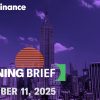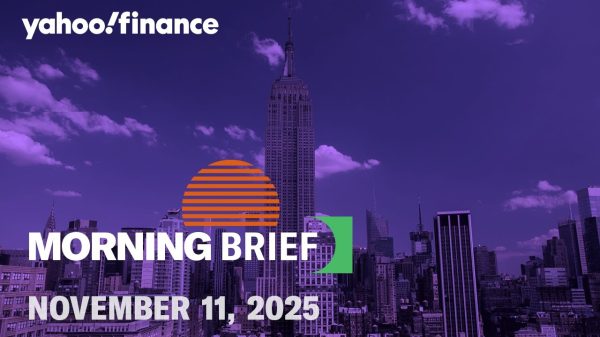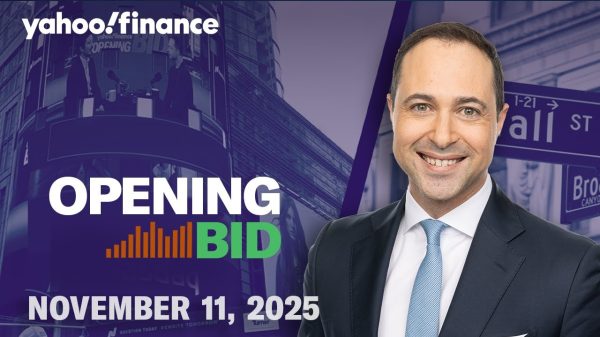Target-date funds are meant to be the ultimate set-it-and-forget-it long-term investment vehicle.
But for investment managers, there has been a percolating debate as to whether target-date funds—and in particular their fixed-income allocation—are diversified enough.
Some say that many target-date funds are too heavily invested in a slice of the fixed-income market—investment-grade bonds—and that can leave portfolios overexposed to U.S. interest rates. They say investors could get higher returns over time and less volatility during periods of rising rates by owning a broader mix of fixed-income assets.
When investing in a 401(k) or other retirement savings account, target-date funds are an easy option. You pick a fund dated around when you plan to retire, and the fund gradually rebalances and reallocates assets, shifting the risk profile of its investments as you approach your retirement date.
Target-date funds generally allocate more to higher-risk investments like equities early on, and shift to more conservative investments like bonds and cash the closer investors get to their retirement dates.
The percentage of Vanguard’s defined-contribution plans offering target-date funds grew from 86% in 2013 to 96% in 2022. As of the end of 2023, there were $1.75 trillion in total net assets in target-date funds, according to Morningstar Direct.
Active versus passive
One key difference among target-date funds is whether they are actively or passively managed. Passive target-date funds are a popular choice for many defined-contribution plans because they generally have lower fees. Target-date funds invested in passive underlying funds held 60% of target date retirement assets in 2022, up from 51% five years earlier, according to J.P. Morgan Asset Management.
Passive target-date funds typically limit underlying investments to lower-cost index funds for both stocks and bonds. That’s where the industry debate over fixed-income diversification comes in.
The S&P 500 index captures more than 80% of the U.S. stock market. By contrast, the Bloomberg U.S. Aggregate Bond Index—the benchmark typically used by fixed income funds—captures just 52% of the U.S. bond market. It’s dominated by U.S. Treasuries and investment-grade corporate bonds and agency mortgage-backed securities.
Market dynamics
“There’s a huge amount of opportunity cost there, just from how much market coverage you’re getting,” says Emily Cao, Retirement Solutions Strategist at J.P. Morgan Asset Management.
She points to two problems. Treasuries comprise about 40% of the Bloomberg Agg, and investors can get higher yields by investing some of their money in other fixed-income assets, she says. The other problem is that the Bloomberg Agg has an average duration of 6.2 years. That’s long enough to fall hard when interest rates rise dramatically; in 2022, the Agg tumbled 13%.
It can be a problem for investors who are nearing retirement, or already in retirement, because their target-date funds have a higher allocation to bonds, which is supposed to make them less volatile. If long- or even medium-duration Treasuries take a dive, their portfolio will take a hit. The ability to actively adjust duration in portfolios based on the rate environment dampens volatility, Cao says.
From 2009 to 2019, stocks returned over 10% annualized, inflation was low, and bond yields were low but stable. In other words, it was easy to put your money in a blend of U.S. stock and bond indexes and forget about it. There would be little need for a more diversified bond portfolio if that environment continued, says Christopher Nikolich, head of glide path strategies in
AllianceBernstein’s
Multi-Asset Solutions business. “But that’s not what we’re seeing.”
Unlike passive managers, active managers have the ability to select assets beyond a core bond allocation, including noninvestment grade bonds such as high yield, emerging market debt, different areas of the credit market like securitized credit, and real assets, such as natural resources and real estate.
“[The Agg] is a small universe compared to the total universe of available types of credit in the institutional market,” says David O’Meara, senior director of investments at
WTW.
Some investors might balk at the idea of allocating to higher-risk pockets of the market like high-yield bonds or real estate. The risk-return characteristics of high-yield bonds are similar to equities, which “increase a balanced portfolio’s downside risk during periods of equity market turmoil,” says Brian Miller, head of Target-Date Product Management at Vanguard.
Value added by active management
T. Rowe Price
has devised target-date funds that shift in a way that make them safer for older investors, says Kim DeDominicis, portfolio manager of target date strategies.
DeDominicis says 70% of its fixed-income holdings is core (which includes U.S. bonds and global dollar bond funds) and 30% is dynamic. “As you shift along the glide path and you increase fixed income exposure, we decrease exposure to long-term Treasuries, and increase to high yield, floating rate and emerging market bonds,” she says.
Research by T. Rowe Price compared the performance of its target date fixed-income allocation to the benchmark index, and found that for the 5-year period ended Dec. 31, 2023, for a 65-year-old investor it returned 1.43% annualized, compared with 1.10% for the Bloomberg US Aggregate Bond Index.
And in 2023, the same-fixed income portion returned 6.08% annualized, versus 5.53% for the index. Other T. Rowe research compared the performance of 11 of its active target-date funds with their passive competitors. All 10 of the funds with 10‐year track records included in the study outperformed their passive competitor indexes in 100% of rolling 10‐year periods from inception through Dec. 31, 2022.
Write to [email protected]
Read the full article here











